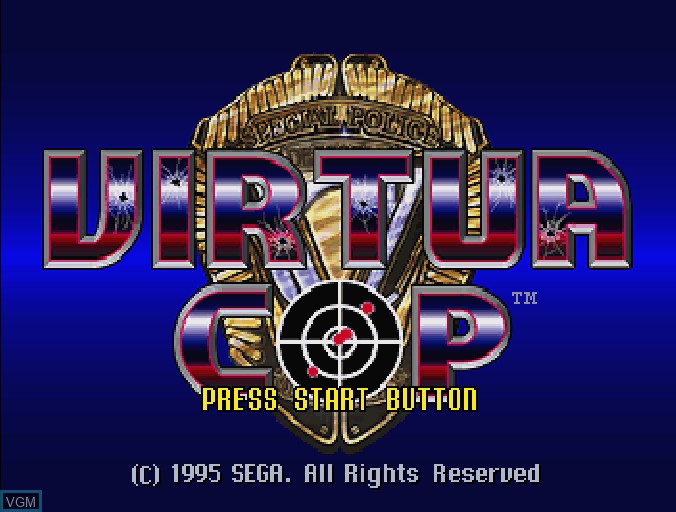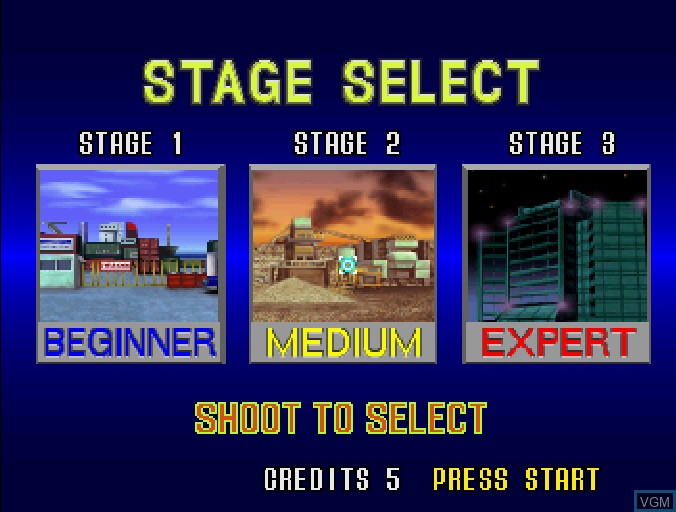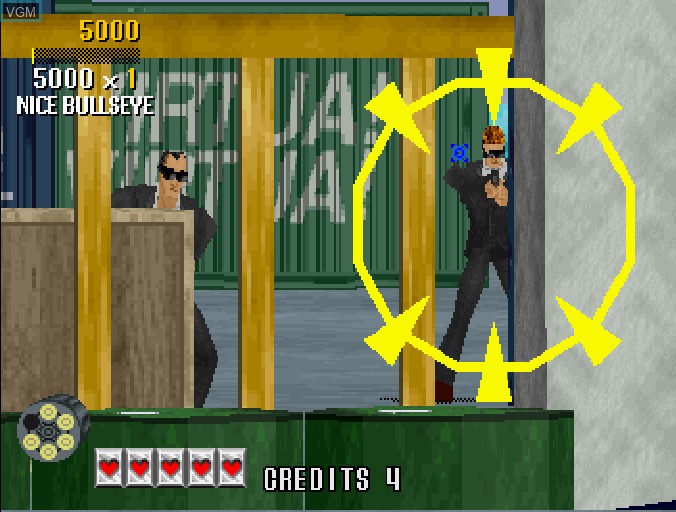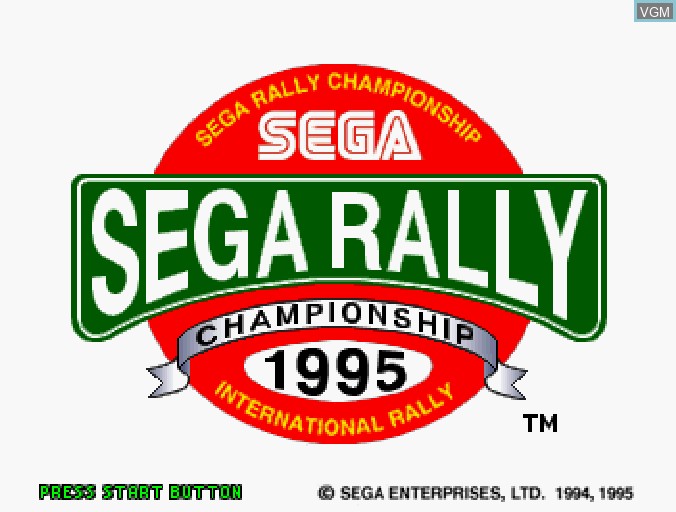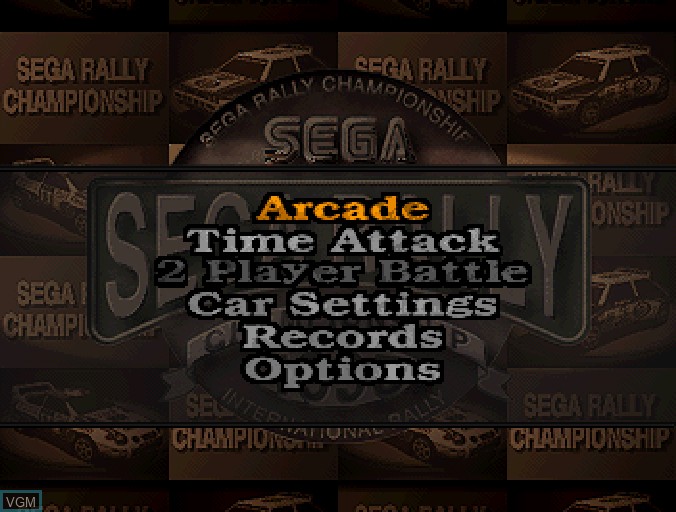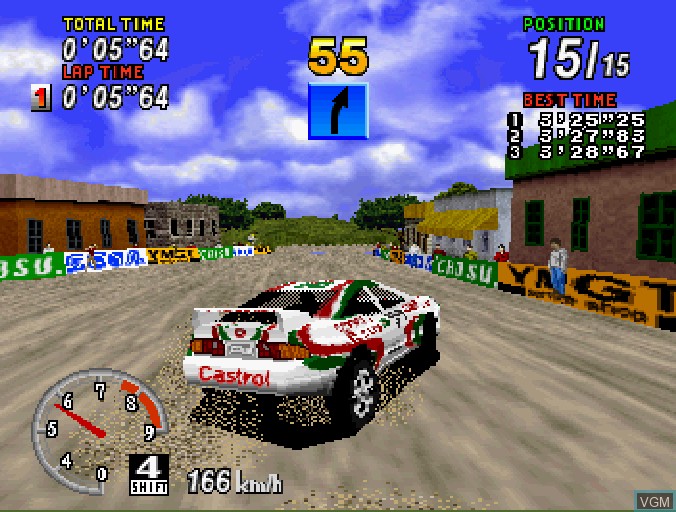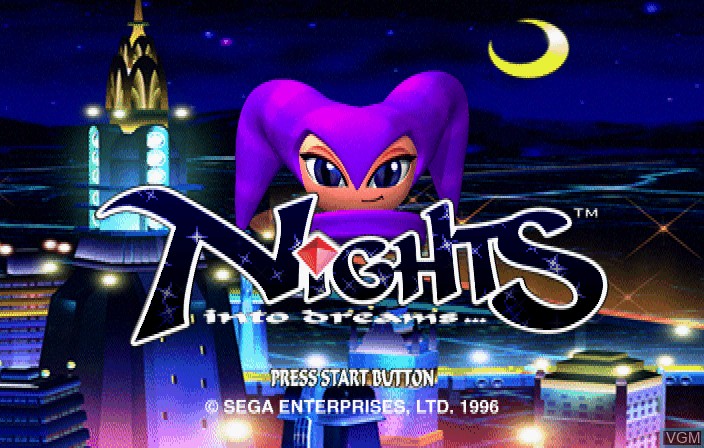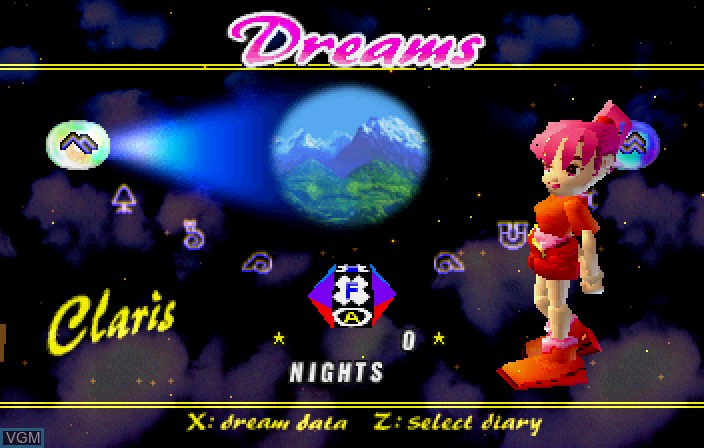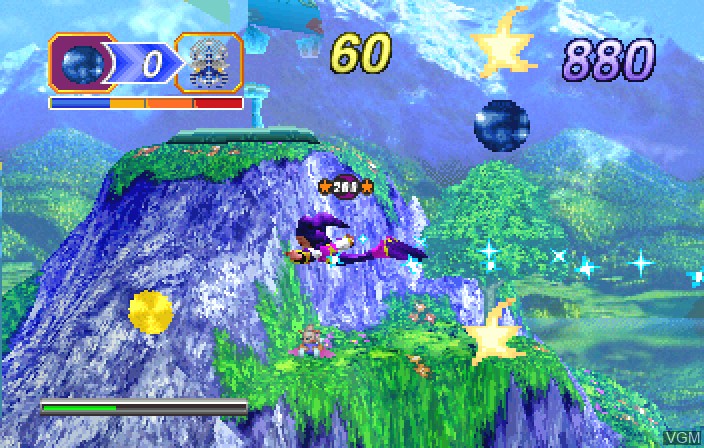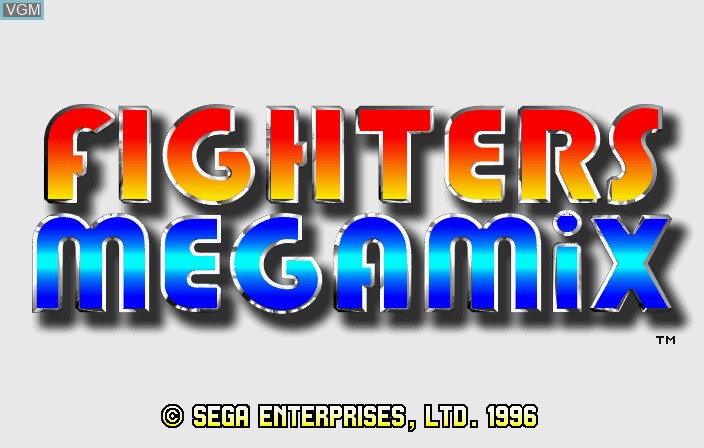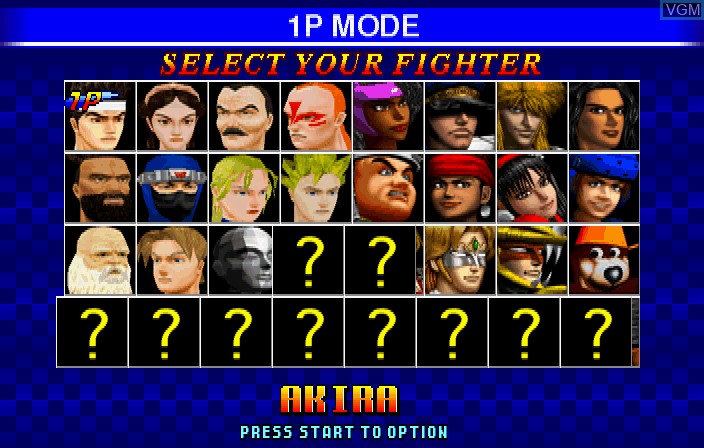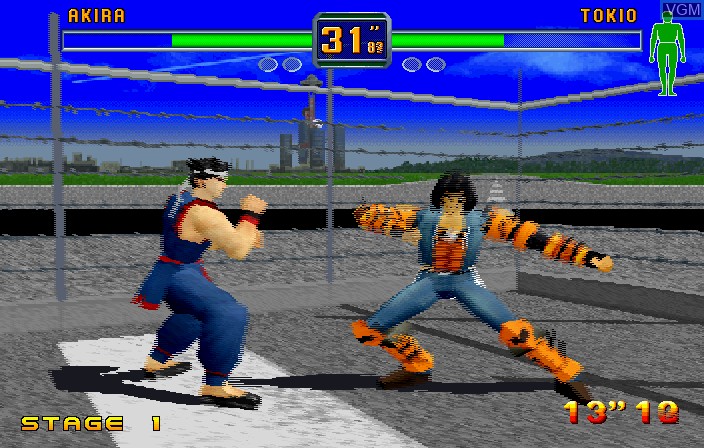NiGHTS into Dreams...(small crack in case)
Virtua Cop
Gameplay
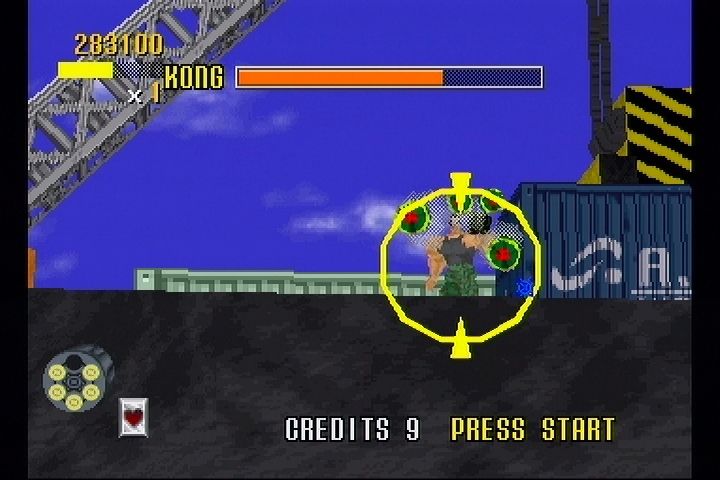
Virtua Cop (バーチャコップ) is an arcade shooter game created by Sega AM2 for Sega Model 2 hardware in 1994. It is the first in the Virtua Cop series. It was one of the first light-gun games to take place in a 3D world, as the first light-gun shooter to use 3D polygons. Sega advertised it as the "world's first texture mapped, polygon action game".
Players assume the role of a police officer - either Michael Hardy, or his partner, James Cools. Played from a first person perspective view, the players must use the light gun to take down the multitude of sharp shooters who come for them. At the start of the game, the player is armed with only a pistol, but more powerful weapons, such as machine guns and shotguns, can be obtained as they progress. These weapons are hidden in breakable objects such as crates, and can be extremely useful when trying to take on the customary end-of-level bosses. There are penalties for shooting civilians.
Virtua Cop was notable for its use of polygonal graphics, which were subsequently used in both House of the Dead and Time Crisis, instead of the two dimensional sprites that were popular for previous games in the same genre. It is also notable for being one of the first games to allow the player to shoot through glass. The game's realistic graphics earned it the "Virtua" title, along with other 3D Sega games such as Virtua Fighter, Virtua Striker and Virtua
Gameplay


Sega Rally Championship (セガラリー・チャンピオンシップ), also known simply as Sega Rally or occasionally by the extended title of Sega Rally Championship 1995, is an arcade racing game developed by Sega AM3 for Sega Model 2A CRX arcade hardware. It was released in 1995 to critical acclaim, and is the first in the Sega Rally series.
This is not the same game as the Game Boy Advance and N-Gage Sega Rally Championships which emerged in the years which followed.
The player can enter a "World Championship" mode consisting of three stages: Desert (which resembles African savanna), Forest (which resembles South American forests) and Mountain (which is based on a shortened Circuit de Monaco), where their finishing position at the end of one course is carried through to the starting position of the next course. In this mode, it is impossible to reach first-place position by the end of the first track; thus, the player must try to overtake as many opponent cars as possible on each track (while staying within the time limit), and gain the lead over several tracks. If, at the end of the third round, the player is in first place, they are able to play a fourth secret circuit called "Lakeside" (on the Saturn version, this course may then be played in time attack and split-screen multiplayer modes).
Three cars are featured in the game; Didier Auriol's third generation Toyota Celica GT-Four and Juha Kankkunen's Lancia Delta HF Integrale which are both available from the start, and Sandro Munari's Lancia Stratos HF which is unlocked by finishing Lakeside in first place in home versions of the game, or by use of an easter egg in the arcade version. Players are given the option to drive each car in either manual or automatic transmission.
Nights into dreams...
Gameplay


NiGHTS into Dreams (ナイツ into dreams) is a video game developed by Sonic Team, and was originally released for the Sega Saturn in mid-1996. It was the first game to be produced by Sonic Team not feature Sonic the Hedgehog, and debuted with the 3D Control Pad, Sega's answer to the Nintendo 64's innovative controller.
NiGHTS is seen by many to be one of the strongest original
titles for the system, with cutting edge visuals and surprisingly
complex gameplay. In the western world, NiGHTS was used as a marketing
ploy to allow the Saturn to compete against Super Mario 64 for
the Nintendo 64, and other 3D titles for the Sony PlayStation in the
1996 winter holiday season. Today it is seen as a cult classic and one
of the flagship products of Sega during the Saturn era.
For the most part, NiGHTS into Dreams is a "2.5D" video game, where the world is rendered as 3D textured polygons, but gameplay is played on a two dimensional field. The basic goal of the game is to reclaim the four stolen "Ideyas" from the four Ideya Captures spread across the level, and return them to the Ideya Palace. Ideya Captures are destroyed by collecting with them, however 20 Blue Chips dotted across the level need to be collected first.
Players usually have to take control of the jester, NiGHTS to achieve this goal. NiGHTS traverses across the 2.5 plane through the skies, performing aerial acrobatics, defeating enemies and ranking up points. However at the start of the level, NiGHTS is held captive within the Ideya Palace, and players need to control the children, Claris or Elliot. The children are not restricted to the 2.5D plane, and can in fact traverse across the map as if the game were a 3D platformer, scaling mountains and wandering across valleys. The children are, however, restricted to the map's boundaries, and will be pursued by the infamous "Alarm Egg" - a floating egg with a clock face on one side. Getting caught by the Alarm Egg is the only way the game can end within a regular level - enemies will slow the children down, but not cause any damage.
Freeing NiGHTS is as simple as entering the palace (usually placed a short distance in front of the starting point), but is not strictly necessary to rescue Ideyas from Ideya Captures. In the 3D children mode, many of the items usually found in the skies lie on the ground (including Blue Chips), and Ideya Captures are within jumping distance. This style of gameplay was adapted for the Sonic into Dreams minigame of Christmas NiGHTS.
Like Sonic the Hedgehog the game is played almost entirely with one button (![]() ,
, ![]() or
or ![]() )
and the D-Pad (or analogue stick), allowing the children to jump or
NiGHTS to speed up and spin. Spinning however, drains power from the
meter in the bottom left of the HUD, and is replenished by flying
through large yellow/orange rings. The
)
and the D-Pad (or analogue stick), allowing the children to jump or
NiGHTS to speed up and spin. Spinning however, drains power from the
meter in the bottom left of the HUD, and is replenished by flying
through large yellow/orange rings. The ![]() and
and ![]() buttons allow NiGHTS to perform acrobatics, though are only useful if
the player flies through a "Power Loop". NiGHTS can defeat enemies by
performing a "paraloop", otherwise known as moving in a clockwise or
anticlockwise circle. This can also reveal bonuses and collect multiple
items at once (including sometimes those in the background).
buttons allow NiGHTS to perform acrobatics, though are only useful if
the player flies through a "Power Loop". NiGHTS can defeat enemies by
performing a "paraloop", otherwise known as moving in a clockwise or
anticlockwise circle. This can also reveal bonuses and collect multiple
items at once (including sometimes those in the background).
Each of the four Ideyas is located on separate looped 2.5D "courses" (or "mares") for NiGHTS, each of which passes through the Ideya Palace. Players will travel around in circles until the Ideya Capture is destroyed, but items will re-spawn if the far away from the camera. NiGHTS' play is timed, and once the time runs out, you will lose any collected blue chips and become the children once more. The scoring system of NiGHTS is rather complex - scores are multiplied considerably by forming chains (links) of rings, and the value of items on the current course will increase further if the Ideya Capture is destroyed (the blue chips turning gold within this time).
To confound things further, NiGHTS has a surprisingly complex "A-Life" system, in which friendly Nightopians littered across the stage, can have their moods changed, be bred (not just with other Nightopians, but with enemies (Nightmaren), creating genetically modified "Mepians"), and be killed with very little effect on gameplay. If the player manages to not kill any Nightopians, an extra point award will be available on the fourth and final path for NiGHTS. The mood of the Nightopians can affect the level's music, though the change will only be heard if the player re-enters the stage.
Collecting all four Ideyas and taking them to the Ideya Palace will take NiGHTS to a boss, which needs to be destroyed within a certain timeframe. Here, it is impossible to play as the children, though getting hit will cause you to lose valuable seconds. Bosses vary depending on the stage, though usually involve bouncing off a weak spot or paralooping.
Fighters Megamix
Gameplay
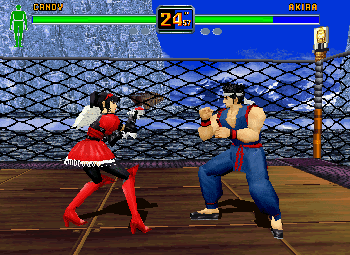
Fighters Megamix (ファイターズ メガミックス, Faitāzu Megamikkusu) is a 1996 fighting video game developed by Sega AM2 for the Sega Saturn. It is a video game crossover of various 3D arcade blockbusters by Sega, from the complete cast of Virtua Fighter 2 and Fighting Vipers to Janet from Virtua Cop 2 and the Hornet car from Daytona USA. It allows gamers to play as the bosses of both Virtua Fighter 2 and Fighting Vipers without codes.
Intended as an introduction to Virtua Fighter 3 (which was announced but never released for the Saturn), Fighters Megamix utilized the concept originally used by The King of Fighters, whereby characters and styles from different games were mixed together. The open ended rings from Virtua Fighter are present (but with no ring-out), and also the closed cages from Fighting Vipers. Virtua Fighter characters have new moves taken from Virtua Fighter 3, including the dodge move, which allows characters to sidestep, avoiding a dangerous blow and opening at the same time room for a counter. Upon release it was hailed as one of the Saturn's best games, with critics deeming its crossover mechanics a complete success, and met with strong sales.
Unlike most of AM2's games of the era, Fighters Megamix did not have an arcade release. In 1998 an adaptation for the Game.com was released by Tiger Electronics.
